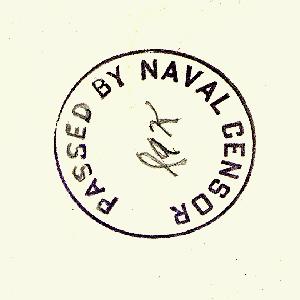HOME |
| HISTORY |
| THE CREW |
| OUR CAPTAIN |
| THE NAME |
| SAILORS |
| MEMORIES New! |
| LIFE ABOARD |
| OUR VOYAGE |
| HIGH AND DRY |
| OUR SONG |
| VMAIL |
| PHOTO GALLERY |
| NEWSLETTER |
| SCHOLARSHIP |
| REUNIONS |
| LINKS |
| Mail Call
All letters from sailors in the war zone were appreciated by love ones back home. On the other hand no words can tell how much sailors looked forward to receiving letters from home at MAIL CALL. Often, sea journeys on the Mad Hooligan lasted as long as two weeks. When in port, our stay would usually be for only a few days --- just long enough to take on fuel, water, provisions and a new cargo. With the ship always on the move, there were many times that it took weeks for our mail to catch up with us. For our crew of 125 men it was not unusual for us to receive six or eight sacks of mail the first day we were in a new port. Once the mail arrived aboard, all work stopped. At Mail Call, the name of the sailor to whom each letter was addressed was shouted loud and clear. Care packages from back home, magazines, newspapers and letters and more letters were a great boast to our morale. We often sent mail out more times than we received it. Why? Leaving mail in a port was easy, but it was quite an effort for mail to catch up with an LST, the way these "work horses" moved around the islands of the Pacific. All outgoing mail had to be censored. It was not unusual to hear that the letter we sent home had "so much cut out of it". The censor used his scissors to cut out whatever he thought to be a risk to security. Where we were, our cargo, other ships in the harbor or ships that were in the last convoy with us and other items were snipped out of the letters we sent. However, clever sailors had worked out codes to let the folks back home know just where they were in that large Pacific Ocean. One fellow would use the serial number of an army buddy to tell where he was. He would write home, that his friend had been transferred and call attention to his new address. Since all army return addresses contained a serial number, he would substitute a longitude and latitude as that number. Halfway through the war, the government developed V-Mail.
|
